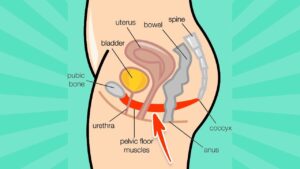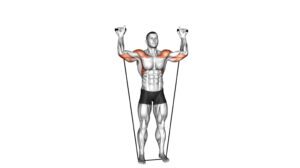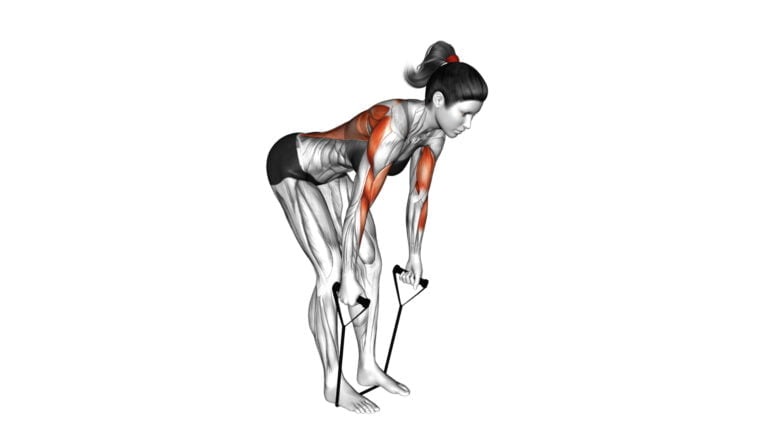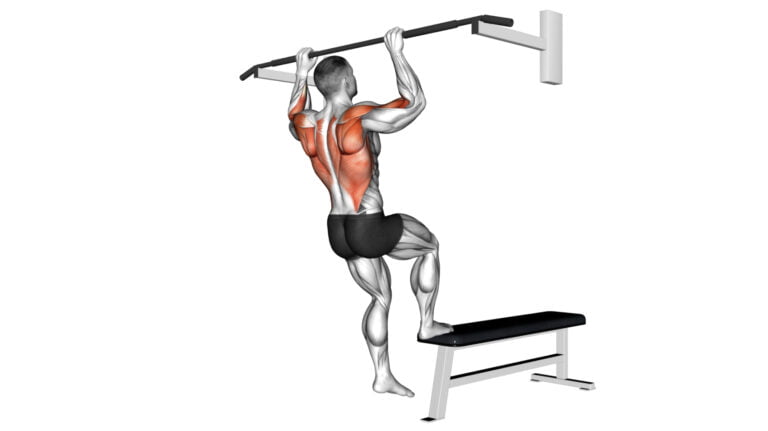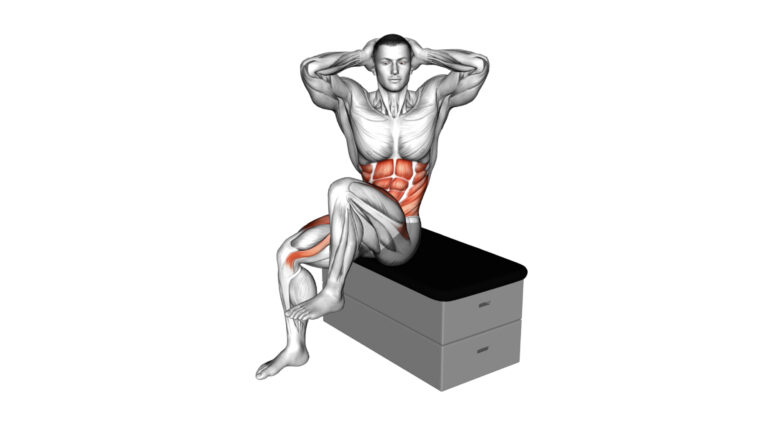7 Pelvic Floor Exercises for Men: A Comprehensive Guide to Strengthening Your Pelvic Muscles

Want to strengthen your pelvic floor muscles? Look no further! In this article, we’ll show you how to do it with simple exercises designed specifically for men.
By targeting your pelvic floor, you can improve bladder control, enhance sexual function, and prevent issues like urinary incontinence.
So, whether you’re a fitness enthusiast or just looking to improve your overall well-being, these exercises are a must-try.
Get ready to take charge of your health and start feeling the benefits today!
Key Takeaways
- Pelvic floor exercises strengthen muscles supporting bladder, bowel, and sexual function.
- These exercises can improve bladder control, prevent urinary incontinence, and enhance sexual performance.
- They can also aid in the prevention and treatment of prostate problems.
- Regular practice of pelvic floor exercises can reduce pelvic pain, prevent organ prolapse, and aid in post-surgery recovery.
Why Aim for a Strong Pelvic Floor?
Taking care of your pelvic floor is crucial for maintaining good overall health. Many men may not realize the importance of pelvic floor exercises, but they play a vital role in your body’s functioning.
Pelvic floor exercises for men help strengthen the muscles that support your bladder, bowel, and sexual function. By incorporating pelvic floor exercise into your routine, you can improve bladder control, prevent urinary incontinence, and enhance sexual performance.
These exercises can also aid in the prevention and treatment of prostate problems. So, don’t underestimate the power of pelvic floor muscle exercises for men. Start incorporating them into your fitness regimen today to reap the numerous benefits they offer.
You may be wondering about the benefits of pelvic floor exercises for men
Well, let’s start with improved bladder control, which can help reduce leakage and frequent trips to the bathroom.
Additionally, these exercises can enhance sexual function, leading to improved erections and better overall sexual satisfaction.
Lastly, pelvic floor exercises can also help reduce pelvic pain, prevent organ prolapse, and aid in faster post-surgery recovery.
Improved Bladder Control
Improved bladder control is a significant advantage of regularly performing pelvic floor exercises. Pelvic floor exercises for men, also known as Kegel and pelvic floor exercises, target the muscles that support the bladder and control urinary function. By strengthening the pelvic floor muscles, you can improve your bladder control and reduce the frequency of urinary incontinence episodes.
These exercises are especially beneficial for men who’ve undergone prostate surgery or have an overactive bladder. Regularly practicing pelvic floor muscle exercises can help you regain control over your bladder and prevent embarrassing leaks. To learn how to correctly perform these exercises, you can find instructional videos on pelvic floor exercises for men.
By improving your bladder control, you can enjoy better urinary function and feel more confident in your daily activities.
Now let’s explore another benefit of pelvic floor exercises: enhanced sexual function.
Enhanced Sexual Function
By incorporating pelvic floor exercises into your routine, you can experience a range of benefits, including enhanced sexual function. Here are some ways that pelvic floor exercises can improve your sexual health:
- Increased erectile strength and stamina: Pelvic floor exercises help to improve blood flow to the pelvic area, leading to stronger and longer-lasting erections.
- Enhanced orgasm control: Strengthening the pelvic floor muscles can help you gain better control over your orgasms, allowing you to last longer and experience more intense pleasure.
- Improved ejaculation control: Pelvic floor exercises can help you develop stronger pelvic muscles, which can result in better control over your ejaculation, reducing the risk of premature ejaculation.
So, yes, men can and should do pelvic floor exercises to improve their sexual function. They’re a simple and effective way to boost your sexual health and overall well-being.
To get started, try exercises like Kegels and reverse Kegels, which involve contracting and relaxing the pelvic floor muscles.
Reduced Pelvic Pain
Strengthening your pelvic floor muscles through exercises can lead to reduced pelvic pain. Pelvic floor exercises for men are not only beneficial for enhancing sexual function but also for alleviating discomfort in the pelvic region. By engaging in regular pelvic floor exercises, you can target and strengthen the muscles that support your pelvic organs, resulting in improved pain management. Here are some key benefits of pelvic floor exercises for men:
| Benefits |
|---|
| Reduced pelvic pain |
| Improved bladder control |
| Enhanced bowel function |
Pelvic floor exercises, such as kegel exercises, can help relieve pelvic pain by increasing blood flow and promoting muscle relaxation. These exercises also aid in improving bladder control, reducing urinary incontinence, and enhancing bowel function. Incorporating pelvic floor physical therapy exercises into your routine can provide additional guidance and support for managing pelvic pain effectively. Start incorporating pelvic floor muscle exercises for men into your daily routine to experience the benefits of reduced pelvic pain.
Prevents Organ Prolapse
Engaging in regular pelvic floor exercises can help prevent organ prolapse, a condition where the pelvic organs descend and protrude from the body. By strengthening the pelvic floor muscles, you can provide support to the organs and reduce the risk of prolapse.
Here are three key benefits of pelvic floor exercises for men:
- Improved muscle tone: Performing pelvic floor exercises regularly can strengthen the muscles that support the bladder, rectum, and urethra. This increased muscle tone helps maintain the position of these organs, reducing the risk of prolapse.
- Enhanced pelvic stability: Strong pelvic floor muscles provide stability to the pelvic region, preventing excessive movement and strain on the organs. This stability helps maintain the proper alignment of the pelvic organs, reducing the risk of prolapse.
- Better bladder and bowel control: Pelvic floor exercises can improve the control you have over your bladder and bowel movements. This can prevent excessive strain during urination or bowel movements, reducing the risk of organ prolapse.
Incorporating pelvic floor exercises into your regular routine can help prevent organ prolapse and promote overall pelvic health.
Faster Post-Surgery Recovery
To further enhance your recovery after surgery, regularly performing pelvic floor exercises can offer several benefits.
Pelvic floor exercises for men after surgery can help promote a faster post-surgery recovery. By engaging in these exercises, you can strengthen your pelvic floor muscles, which play a crucial role in supporting your bladder, bowel, and sexual function.
Strong pelvic floor muscles can improve blood circulation and promote healing in the surgical area. Additionally, these exercises can help reduce the risk of complications such as urinary incontinence and erectile dysfunction.
Watch men’s pelvic floor exercises Video
Start by viewing the instructional video to learn how to effectively perform pelvic floor exercises for men. This video will provide you with step-by-step instructions and demonstrations on how to correctly engage your pelvic floor muscles. Here are three reasons why you should watch the video:
- Visual demonstration: The video includes pictures and visuals that will help you understand the correct technique and form for pelvic floor exercises for men.
- Clear instructions: The video provides a detailed explanation of each exercise, ensuring that you perform them correctly and maximize the benefits.
- Benefits of pelvic floor exercises: The video highlights the numerous benefits of pelvic floor exercises for men, such as improving bladder control, enhancing sexual function, and reducing the risk of incontinence.
After watching the video and familiarizing yourself with the exercises, you’ll be ready to move on to the next section about exercises for a.
7 pelvic floor exerciser for men
Ready to strengthen your pelvic floor? Here are some effective exercises for you to try.
Start with the kneeling hip thrust, which targets your glutes and pelvic floor muscles.
Next, incorporate the pelvic tilt to engage your deep core muscles.
For a full-body workout, include the reverse plank, frog hip thrust, and bridge hip abduction.
Get ready to feel stronger and more in control with these exercises.
Kneeling Hip Thrust
When you perform the kneeling hip thrust exercise, you engage your pelvic floor muscles while targeting your glutes and hamstrings. This exercise is a great addition to your pelvic floor exercises for men routine, as it helps strengthen your pelvic floor and improve your overall stability and control.
Here are some benefits of including kneeling hip thrusts in your workout:
- Increased pelvic floor muscle strength: This exercise specifically targets your pelvic floor muscles, helping to strengthen and tone them.
- Improved glute and hamstring strength: By performing kneeling hip thrusts, you can also target and strengthen your glutes and hamstrings, which can contribute to better overall lower body strength.
- Enhanced core stability: Engaging your pelvic floor muscles during this exercise can help improve your core stability and control, leading to better posture and reduced risk of injuries.
Pelvic Tilt
To perform a pelvic tilt, contract your abdominal muscles and tilt your pelvis forward. This exercise is beneficial for men who want to improve their control and endurance during sexual activity. By engaging your abdominal muscles and tilting your pelvis forward, you’re activating and strengthening the pelvic floor muscles. Pelvic floor exercises for men, such as the pelvic tilt, can help strengthen the muscles in your pelvic floor. Pelvic floor exercisers for men can also be used to enhance the effectiveness of these exercises. Whether you choose to do pelvic floor exercises for men standing or lying down, incorporating the pelvic tilt into your routine can help you last longer and have better control.
Now, let’s move on to the next exercise, the reverse plank.
Reverse plank
You can perform the reverse plank to target and strengthen your abdominal muscles. This exercise is a great addition to your pelvic floor exercises for men routine, as it engages multiple muscle groups, including your pelvic floor muscles.
Here are some benefits and tips to help you get the most out of this exercise:
- Benefits of reverse plank:
- Strengthens your core and abdominal muscles
- Improves posture and stability
- Increases flexibility in your shoulders and hips
- Tips for performing reverse plank:
- Start by sitting on the floor with your legs extended in front of you.
- Place your hands on the floor behind you, fingers pointing towards your feet.
- Lift your hips off the ground, creating a straight line from your head to your heels.
- Engage your core and squeeze your glutes.
- Hold this position for 10-30 seconds, gradually increasing the duration as you get stronger.
By incorporating the reverse plank into your beginner pelvic floor exercises for men, you can enjoy the benefits of a stronger core and improved pelvic floor muscles.
Now, let’s move on to the next exercise: the frog hip thrust.
Frog Hip Thrust
To continue strengthening your pelvic floor muscles, incorporate the Frog Hip Thrust into your routine. This exercise specifically targets your glutes and pelvic floor muscles, helping to enhance their strength and functionality.
To perform the Frog Hip Thrust, start by lying on your back with your knees bent and feet flat on the ground. Place your feet together and let your knees fall out to the sides, resembling a frog position. Engage your glutes and lift your hips off the ground, squeezing your pelvic floor muscles as you reach the top. Hold for a few seconds, then slowly lower your hips back down.
Repeat this movement for 10-15 repetitions, gradually increasing as your strength improves. Adding the Frog Hip Thrust to your pelvic floor exercises for men can contribute to a more robust pelvic floor and better overall pelvic health.
Bridge Hip Abduction
Incorporate the Bridge Hip Abduction into your routine to continue strengthening your pelvic floor muscles and further enhance their functionality. This exercise targets not only the pelvic floor muscles but also the glutes and hip abductors.
Here are three key benefits of including Bridge Hip Abduction in your pelvic floor exercises for men:
- Increased pelvic stability: Performing this exercise helps improve the stability of your pelvis, which is essential for maintaining proper posture and preventing pelvic floor dysfunction.
- Strengthened glutes: The Bridge Hip Abduction engages your glute muscles, which play a crucial role in pelvic floor support. Strengthening these muscles can alleviate symptoms of pelvic floor weakness.
- Enhanced hip mobility: By incorporating hip abduction movements into the bridge exercise, you can improve the flexibility and range of motion in your hip joints, promoting overall pelvic health.
Side Lying Leg Adduction
Continuing with the strengthening of your pelvic floor muscles and expanding their functionality, incorporate the Side Lying Leg Adduction into your routine. This exercise specifically targets the muscles in your inner thighs, which can contribute to overall pelvic floor strength.
To perform this exercise, lie on your side with your legs straight and stacked on top of each other. Keeping your top leg straight, lift it towards the ceiling as high as you can comfortably go, then lower it back down. Repeat this movement for the desired number of repetitions, then switch sides.
By incorporating side lying leg adduction into your pelvic floor exercise routine, you can further enhance the strength and functionality of your pelvic floor muscles.
Remember to always consult with a healthcare professional before starting any new exercise program.
Expert Tips for Effectiveness
To ensure the effectiveness of your pelvic floor exercises, there are several expert tips you should keep in mind.
- Firstly, focus on maintaining proper technique and form, as this will help target the correct muscles and prevent injury.
- Secondly, be consistent with the frequency of your exercises, aiming to incorporate them into your daily routine.
- Lastly, track your progress and results to stay motivated and make adjustments as needed.
Proper Technique and Form
Are you unsure about how to perform pelvic floor exercises correctly for optimal effectiveness? Don’t worry, we’ve got you covered! Here are some expert tips on the proper technique and form for pelvic floor exercises for men:
- Start by locating your pelvic floor muscles. You can do this by stopping the flow of urine midstream or by imagining that you’re trying to prevent passing gas.
- Once you’ve identified the muscles, contract them by squeezing and lifting them upward. Hold for a few seconds, then release and relax.
- It’s important to breathe normally and not hold your breath during the exercise.
- Aim to do 10 repetitions, 3 times a day.
- Remember that consistency is key. Incorporate these exercises into your daily routine to see the best results.
Now that you know how to perform pelvic floor exercises with proper technique and form, let’s move on to discussing the frequency of these exercises.
Frequency of Exercises
Now that you know the proper technique and form for pelvic floor exercises, let’s discuss how often you should be doing these exercises to maximize their effectiveness.
The frequency of pelvic floor exercises for men is crucial in achieving the desired results. It’s recommended to perform these exercises at least three times a day. Consistency is key, so try to incorporate them into your daily routine.
You can start with a set of ten repetitions, holding each contraction for a few seconds, and gradually increase the number of repetitions over time. Remember, it’s important to give your muscles time to rest and recover, so avoid overexertion.
Benefits for Men
To maximize the effectiveness of pelvic floor exercises for men, it’s important to understand the benefits and follow expert tips for effectiveness. Here are some benefits of pelvic floor exercises for men:
- Improved bladder control: Pelvic floor muscle exercises can help strengthen the muscles that control urination, reducing the risk of urinary incontinence.
- Enhanced sexual function: Regular pelvic floor exercises can improve erectile function and increase sexual satisfaction.
- Prevention of pelvic organ prolapse: Strengthening the pelvic floor muscles can help support the pelvic organs and reduce the risk of prolapse.
To get the most out of your pelvic floor exercises, consider these expert tips:
- Consistency is key: Aim for regular exercise sessions to gradually strengthen the pelvic floor muscles.
- Proper technique: Learn the correct way to perform pelvic floor muscle exercises to ensure maximum effectiveness.
- Gradual progression: Start with shorter contractions and gradually increase the duration and intensity of the exercises over time.
Common Mistakes to Avoid
What are some common mistakes that can hinder the effectiveness of pelvic floor exercises for men?
- One common mistake isn’t knowing how to do pelvic floor exercises for men properly. It’s crucial to learn the right technique to engage the pelvic floor muscles effectively.
- Another mistake isn’t being consistent with the exercises. Consistency is key to strengthening the pelvic floor muscles and experiencing long-term benefits.
- Additionally, rushing through the exercises or not fully engaging the muscles can also hinder effectiveness. It’s important to take your time and focus on contracting and relaxing the pelvic floor muscles with each repetition.
Tracking Progress and Results
To effectively track your progress and results with pelvic floor exercises, it’s important to set specific goals and regularly evaluate your performance. By doing so, you can ensure that you’re making progress and staying on track with your men pelvic floor muscle exercises.
Here are some expert tips to help you track your progress effectively:
- Keep a workout journal: Write down the details of each session, including the exercises you did, the number of repetitions, and any notes or observations.
- Use a tracking app: There are many apps available that can help you track your workouts and progress. These apps often provide guidance on the best pelvic floor exercises for men and allow you to set goals and monitor your performance.
- Measure your strength and endurance: Periodically assess your pelvic floor muscle strength and endurance using exercises like Kegels. This will give you tangible measurements to track your progress and see improvements over time.
Common Mistakes
When it comes to pelvic floor exercises, there are common mistakes that you should be aware of.
One mistake is incorrect muscle activation, where you may be targeting the wrong muscles and not experiencing the full benefits.
Overexertion and strain can also occur if you push yourself too hard, leading to potential injuries.
Lastly, inconsistent exercise routines and lack of proper guidance can hinder your progress.
It’s important to pay attention to these warning signs and make adjustments for a successful pelvic floor exercise routine.
Incorrect Muscle Activation
One common mistake men make when performing pelvic floor exercises isn’t fully engaging the correct muscles. It’s important to activate the pelvic floor muscles properly to reap the full benefits of these exercises.
To help you understand the incorrect muscle activation and avoid making the same mistakes, consider the following:
- Rushing through the exercises without focusing on muscle engagement.
- Contracting the buttock or abdominal muscles instead of the pelvic floor muscles.
- Holding your breath or tensing other muscles while performing the exercises.
By being mindful of these common mistakes, you can ensure that you’re correctly activating the pelvic floor muscles during your exercises. This will help you strengthen the pelvic floor and improve bladder control, sexual function, and overall pelvic health.
Remember to take your time, breathe properly, and focus on the correct muscles to maximize the effectiveness of your pelvic floor exercises.
Overexertion and Strain
To avoid overexertion and strain during pelvic floor exercises, it is important for you to maintain proper form and avoid pushing yourself too hard. Overexertion can lead to muscle fatigue, injury, and even worsen existing pain or conditions. Take it slow and gradually increase the intensity of your pelvic floor exercises over time. Remember to breathe steadily and relax your body as you perform the exercises. To help you better understand the common mistakes to avoid, here is a table outlining the do’s and don’ts during pelvic floor exercises:
| Do’s | Don’ts |
|---|---|
| Maintain proper form | Push yourself too hard |
| Gradually increase intensity | Hold your breath |
| Breathe steadily | Overexert and strain your muscles |
| Relax your body | Ignore pain or discomfort |
| Listen to your body and adjust accordingly | Perform exercises incorrectly |
Inconsistent Exercise Routine
To maintain progress and achieve optimal results from your pelvic floor exercises, it’s crucial to address the issue of inconsistency in your exercise routine. By staying consistent, you can ensure that you’re effectively strengthening your pelvic floor muscles and improving your overall men’s health.
Here are some common mistakes to avoid when it comes to maintaining a consistent exercise routine:
- Lack of planning: Plan out your exercise schedule ahead of time to ensure that you have dedicated time for your pelvic floor exercises.
- Skipping workouts: Avoid skipping workouts, as this can disrupt your progress and hinder your results.
- Lack of motivation: Find ways to stay motivated, such as watching pelvic floor exercise videos on YouTube or seeking guidance from a pelvic floor physical therapist.
Lack of Proper Guidance
To avoid common mistakes in your pelvic floor exercise routine, it is important to seek proper guidance. Lack of proper guidance can lead to ineffective exercises or even pelvic floor dysfunction. Here are some common mistakes to watch out for:
| Common Mistake | Why it’s a Mistake |
|---|---|
| Not knowing the exercises | Without knowledge of specific pelvic floor exercises for men, you may not be targeting the right muscles or achieving the desired results. |
| Lack of proper form | Incorrect technique can reduce the effectiveness of the exercises and potentially strain other muscles. |
| Ignoring pelvic floor relaxation exercises | Strengthening is important, but relaxation exercises are equally vital for a balanced pelvic floor routine. |
Ignoring Warning Signs
If you ignore warning signs, you risk exacerbating pelvic floor dysfunction and hindering the effectiveness of your exercises. It’s important to pay attention to your body and address any discomfort or abnormal symptoms that may arise during your pelvic floor exercises for men. Ignoring warning signs can lead to further complications and delay your progress.
Here are some common warning signs that you should never overlook:
- Urinary incontinence or leakage during exercise
- Pain or discomfort in the pelvic area
- Difficulty emptying the bladder completely
Remember, these warning signs are your body’s way of communicating that something isn’t right. Don’t ignore them. Instead, consult with a healthcare professional who can guide you in adjusting your exercises or recommend additional treatments if necessary.
Timeline for Results
You can expect to see results from pelvic floor exercises for men within a few weeks of consistent practice. The timeline for results may vary depending on various factors such as the severity of your pelvic floor dysfunction, your overall health, and how diligently you follow the exercise routine.
Generally, after a few weeks of regular practice, you may start noticing improvements in urinary control, reduced frequency of urination, and increased sexual stamina. However, it’s important to note that individual results may vary.
It’s crucial to stick to the prescribed exercises and maintain consistency to achieve optimal results. Remember, patience and persistence are key when it comes to pelvic floor exercises for men. So, keep at it and don’t give up!
Frequently Asked Questions
Can Pelvic Floor Exercises Help With Erectile Dysfunction?
Yes, pelvic floor exercises can help with erectile dysfunction. By strengthening your pelvic floor muscles, you can improve blood flow to the penis and enhance your ability to achieve and maintain an erection.
Can Pelvic Floor Exercises Improve Sexual Performance?
Yes, performing pelvic floor exercises can improve your sexual performance. They strengthen the muscles responsible for erections, control ejaculation, and enhance sexual sensations, leading to better overall performance in the bedroom.
Are Pelvic Floor Exercises Only Beneficial for Older Men?
Are pelvic floor exercises only for older men? No, they can benefit men of all ages. These exercises strengthen the muscles that support the bladder, bowel, and sexual function, promoting overall health and well-being.
Can Pelvic Floor Exercises Prevent Urinary Incontinence in Men?
Pelvic floor exercises, regardless of age, can help prevent urinary incontinence in men. By strengthening the muscles in your pelvic floor, you can improve bladder control and reduce the risk of leaks.
Are There Any Risks or Side Effects Associated With Pelvic Floor Exercises for Men?
Are there any risks or side effects with pelvic floor exercises for men? It’s important to note that while rare, some potential risks include pelvic pain or discomfort, muscle soreness, and urinary tract infections.
Conclusion
In conclusion, pelvic floor exercises for men offer numerous benefits and can be easily incorporated into a daily routine.
By following expert tips and avoiding common mistakes, men can effectively strengthen their pelvic floor muscles.
With regular practice, positive results can be expected within a reasonable timeframe.
So, start incorporating these exercises into your routine today and reap the benefits of a stronger pelvic floor.

Author
Years ago, the spark of my life’s passion ignited in my mind the moment I stepped into the local gym for the first time. The inaugural bead of perspiration, the initial endeavor, the very first surge of endorphins, and a sense of pride that washed over me post-workout marked the beginning of my deep-seated interest in strength sports, fitness, and sports nutrition. This very curiosity blossomed rapidly into a profound fascination, propelling me to earn a Master’s degree in Physical Education from the Academy of Physical Education in Krakow, followed by a Sports Manager diploma from the Jagiellonian University. My journey of growth led me to gain more specialized qualifications, such as being a certified personal trainer with a focus on sports dietetics, a lifeguard, and an instructor for wellness and corrective gymnastics. Theoretical knowledge paired seamlessly with practical experience, reinforcing my belief that the transformation of individuals under my guidance was also a reflection of my personal growth. This belief holds true even today. Each day, I strive to push the boundaries and explore new realms. These realms gently elevate me to greater heights. The unique combination of passion for my field and the continuous quest for growth fuels my drive to break new ground.





